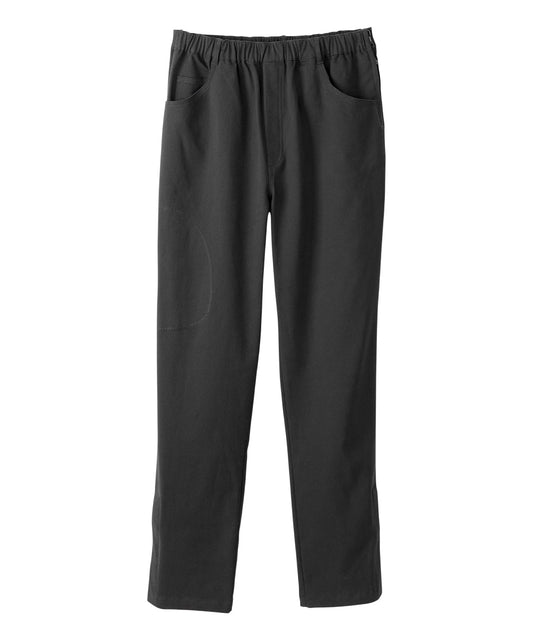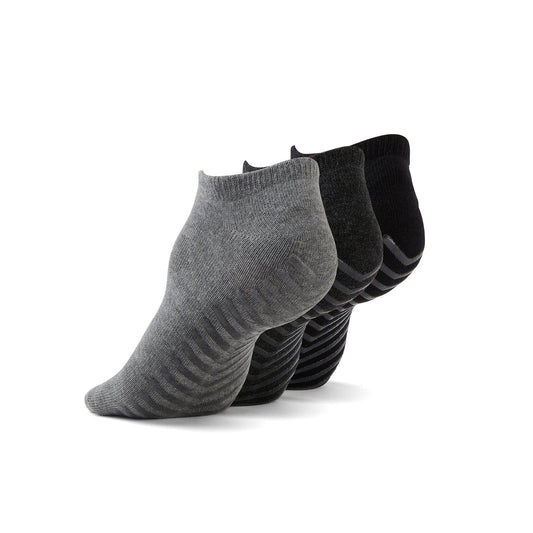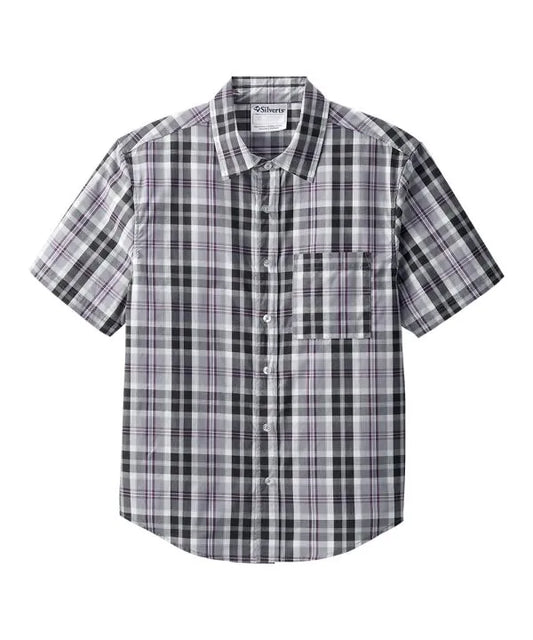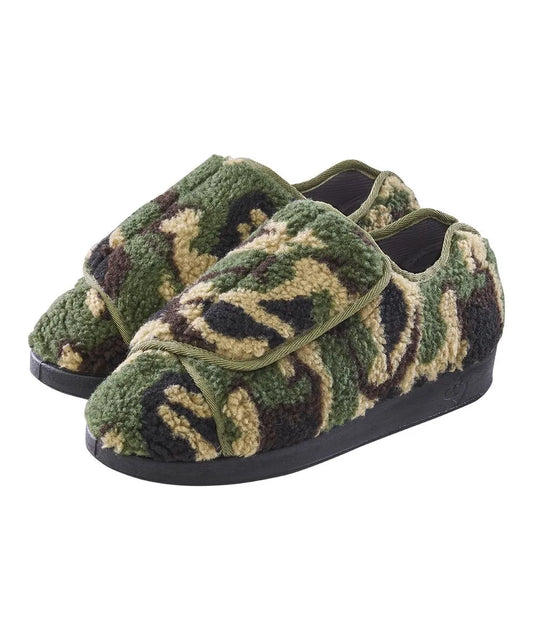Written by Tara Chen & reviewed by Nicole Fernandes
As individuals become older, the risk of falling increases due to less balance, muscle weakness, mobility issues, and more. Falls can lead to severe and permanent consequences for seniors, including injuries and a loss of independence. It is important to help seniors stay safe and decrease the risk of falls by having preventative measures in place.
This article explores eight essential fall prevention gifts for seniors that can significantly reduce the risk of falls and provide peace of mind for both seniors and their families.
1. Non-slip bath mats and grab bars
The bathroom can be a wet and slippery room of the house where falls may occur. To help your senior loved ones prevent accidents, it can be helpful to place non-slip bath mats and install grab bars on the wall to help them maintain their balance.
Non-slip bath mats are less likely to slide across the bathroom floor compared to traditional bath mats. They also provide a stable surface, especially those that feature suction cups and a strong grip. Additionally, non-slip strips or adhesive treads can be placed in the bathtub or shower to provide additional traction.
Grab bars are most useful when installed on the wall next to the toilet, shower, and bathtub. They help seniors stand up, sit down, and maintain balance. Remember to check how much weight the grab bar can withstand and ensure that they are properly installed in the washroom.
2. Sturdy walking aids
Walking may also be difficult due to injury, certain medical conditions, and old age. Walking aids, such as canes, walkers, and rollators, may help seniors maintain their balance when travelling from one place to another by enhancing stability. It can reduce the risk of falls for seniors with balance or mobility issues. When selecting a walking aid, it's important to consider the individual's specific needs and capabilities.
Canes are useful for individuals who require minimal support or have mild balance issues. They provide additional stability when walking and can be adjusted to the senior’s height. On the other hand, walkers offer more support and are helpful for those who require greater stability or have difficulty bearing weight on one leg. Rollators, which are walkers with wheels, are ideal for seniors who require both support and mobility assistance. They provide a seat for resting and often come with storage compartments for carrying personal belongings.
3. Non-slip footwear
Appropriate footwear plays a crucial role in fall prevention for seniors. Seniors should wear shoes with non-slip soles that provide good traction and support. Additionally, slip-on shoes or slippers with a back strap are particularly recommended, as they are easier to put on and take off, and prevent tripping.
Look for footwear with a tread pattern that provides excellent grip on various surfaces, including both dry and wet conditions. Rubber soles with grooves or textured patterns are ideal for maximizing traction. Avoid shoes with smooth soles or high heels, as they can increase the risk of slips and falls.
For example, June Adaptive offers a pair of Women’s Wide Non-Slip Adjustable Indoor Slippers in nine sizes and two colours. They offer flexibility and are extremely comfortable to wear around the house while lounging or doing chores.

4. Adaptive clothing
For seniors with mobility or dexterity challenges, getting dressed can be a difficult task that increases the risk of falls. Fortunately, adaptive clothing is designed to make dressing easier and more comfortable for individuals. These garments have adaptive features such as Velcro closures, magnetic buttons, or elastic waistbands, which allow for easier dressing and undressing. They are also designed with convenience in mind to allow seniors to dress independently or with minimal assistance, thereby reducing the risk of falls caused by struggling with traditional clothing fastenings.
For example, June Adaptive offers a Men’s Reversible Front Vest with Magnetic Closure in six sizes and four patterns. It is not only stylish, but also easy to use, is made of comfortable fabric, and has secure closures. Moreover, June Adaptive also offers Women’s Pull-on Pants with Pockets that come in eight sizes and four colours. It is comfortable, easy to put on, and has convenient side pockets!
When choosing adaptive clothing, consider the individual's specific needs and preferences. Look for garments made from soft and breathable materials that offer comfort and ease of movement. Adaptive clothing not only enhances safety but also promotes confidence and self-esteem, allowing seniors to maintain their personal style while prioritizing their safety and independence.


5. Sensor-activated nightlights
Walking in a room or hallway at nighttime can be dark, which makes it difficult to see the furniture. This can be a safety hazard as seniors might trip or fall on items. To minimize this risk at night, it may be useful to purchase and place sensor-activated nightlights in commonly walked areas such as their bedroom, the hallway to the bathroom, and other locations. Sensor-activated nightlights are automatically lit when motion is detected, which means that seniors do not need to fumble or search for the light switch. A nightlight is also a soft light which will not be blinding or damaging to seniors’ eyes.
When selecting sensor-activated nightlights, look for models with adjustable brightness settings to suit your senior’s preferences. Additionally, motion-activated nightlights that have a wide sensing range and can detect movement from a long distance are particularly useful.
6. Medication management systems
Most seniors take some form of medication, while others may need to take several medications in a week. This can be confusing and may lead to potentially detrimental effects if some medications are not taken due to forgetfulness. Other seniors may sometimes take incorrect dosages of their medication, which is also harmful. Thus, seniors may benefit from medication management systems which help in organizing which medication and dosage to take on each day.
Pill organizers with alarms are a popular choice for seniors. They have compartments labelled with the days of the week and have built-in alarm systems. The alarms are set at certain times of the day to remind seniors to take their medications. Some advanced pill organizers even have multiple alarms to cater to complex medication regimens.
Alternatively, there are automatic medication dispensers that store and dispense medication at predetermined times. They are programmed to release the correct dosages, which eliminates the risk of accidental overdosing or missed doses. Automatic dispensers often come with visual and auditory alarms to inform seniors when it is time to take their medication.
It is important to ensure that medication management systems are set up properly and regularly maintained. Seniors and their caregivers should review and update medication schedules as needed.
7. Exercise equipment and classes for strength and balance
Maintaining balance requires bodily strength, which is obtained from muscle and regular exercise. Exercising reduces the risk of falls by improving both balance and flexibility. By gifting seniors exercise equipment such as resistance bands, light weights, balance boards, and more, they may develop a stronger core and a healthier body to help them be stronger. Exercise items that can be used at home would be especially convenient.
Resistance bands are versatile and can be used for many strength-building exercises. They provide a small amount of resistance that can help seniors build muscle strength without putting excessive strain on their joints. Additionally, balance boards can help seniors improve and practise their balance at home.
They challenge the body's equilibrium and help seniors develop better coordination and control. Moreover, light weights or dumbbells can be used to perform simple strength-training exercises that target different muscle groups. Remember that when gifting exercise equipment, ensure that the items are suitable for the individual's physical abilities and limitations.
Moreover, gifting Yoga or tai chi classes, specifically designed for seniors, can help them improve flexibility, posture, and balance. These programs often incorporate gentle movements, stretches, and breathing exercises that promote overall well-being. These types of exercises are also typically done in groups or communities, which can further boost their mental health and happiness.
8. Fall detection systems
For seniors living alone, fall detection systems offer an added layer of security and peace of mind. These systems use sensors or wearable devices to detect falls and then they automatically inform emergency contacts or medical personnel about the situation. Some fall detection systems also have GPS technology, which allows emergency responders to locate the senior quickly.
Wearable fall-detection devices such as pendants, wristbands, or watches are commonly used. They contain built-in sensors that detect sudden movements or changes in orientation that may indicate a fall. When a fall is detected, the device sends an alert to designated contacts or a monitoring center.
Other fall detection systems use motion sensors or cameras installed in the home. These systems can track movements and detect abnormal patterns or sudden changes that might indicate a fall. They can also automatically trigger alerts to caregivers or emergency responders.
When selecting a fall detection system, consider the individual's preferences and lifestyle. Choose a system that is comfortable to wear, easy to use, and offers reliable fall-detection capabilities. It is also important to set up emergency contacts and test the system regularly to ensure it is functioning correctly.
From bathroom safety aids to adaptive clothing to exercise equipment, there are several fall prevention gifts that seniors would appreciate! These gift ideas will significantly reduce the risk of falls and promote the well-being and independence of seniors.
By incorporating these recommendations into daily life, we can help create a safe and supportive environment that allows seniors to navigate their daily activities with confidence and reduce the risk of falls.















